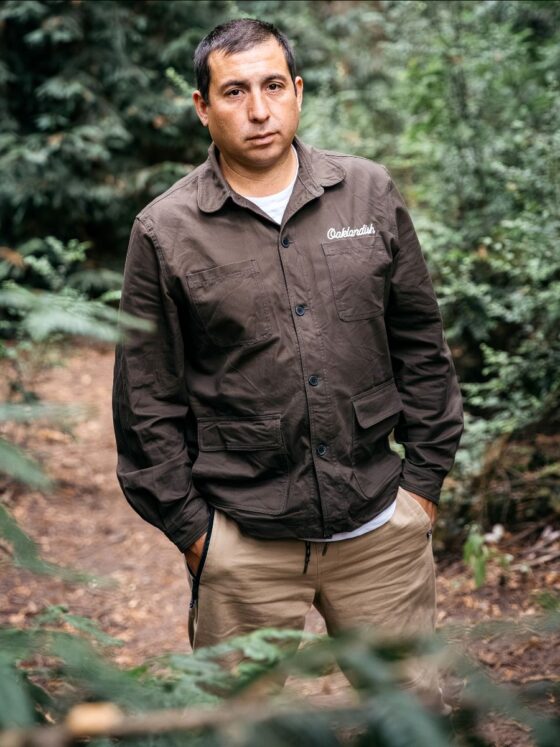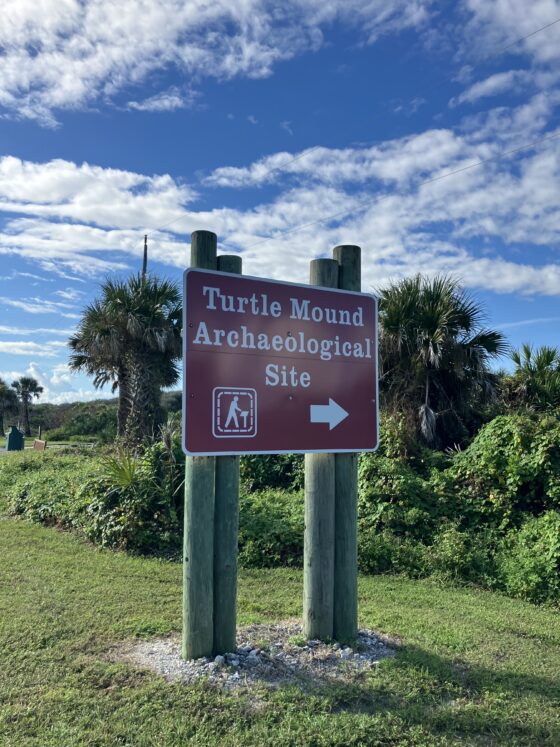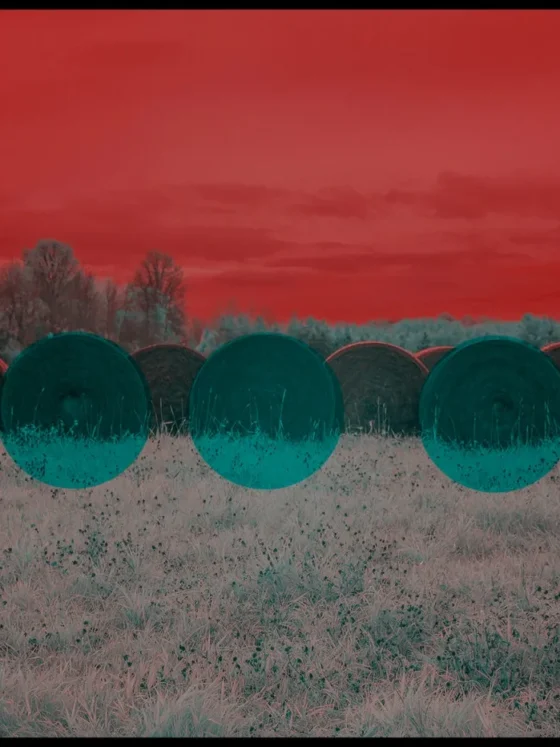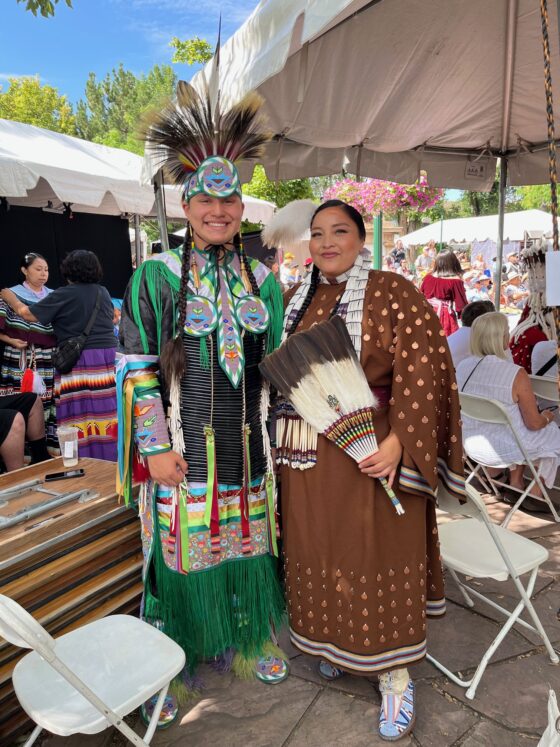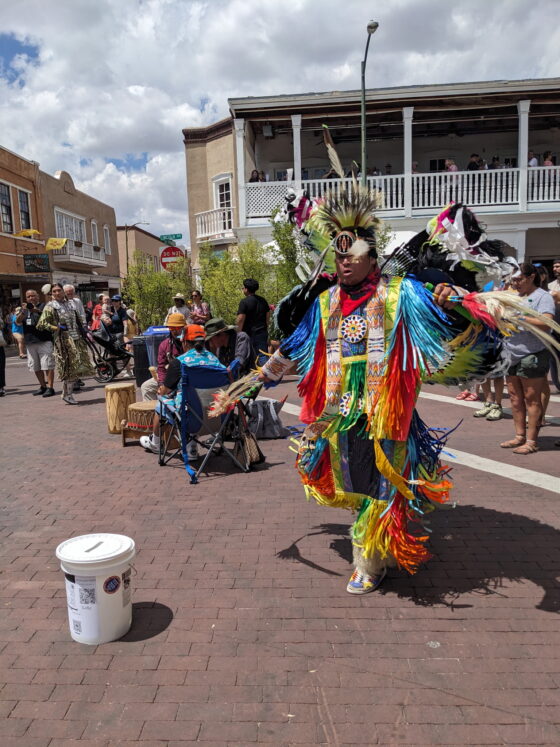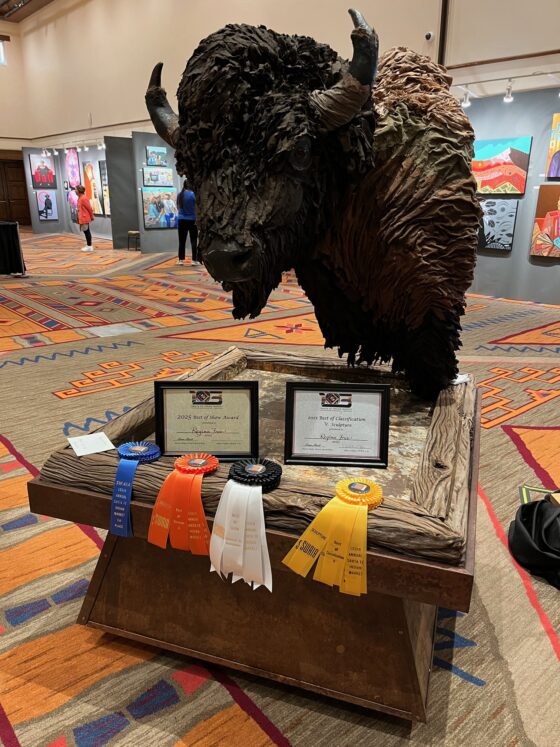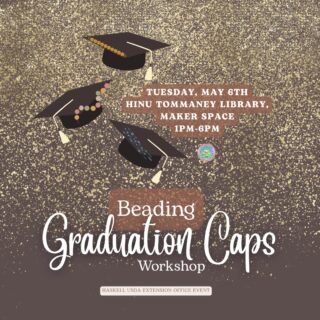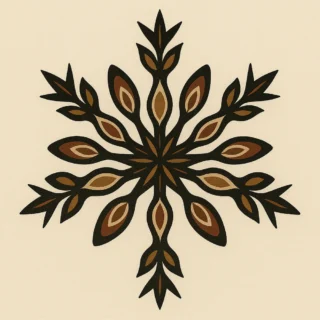Ingredients: The Fry Bread Interview with Maeve Hilgers
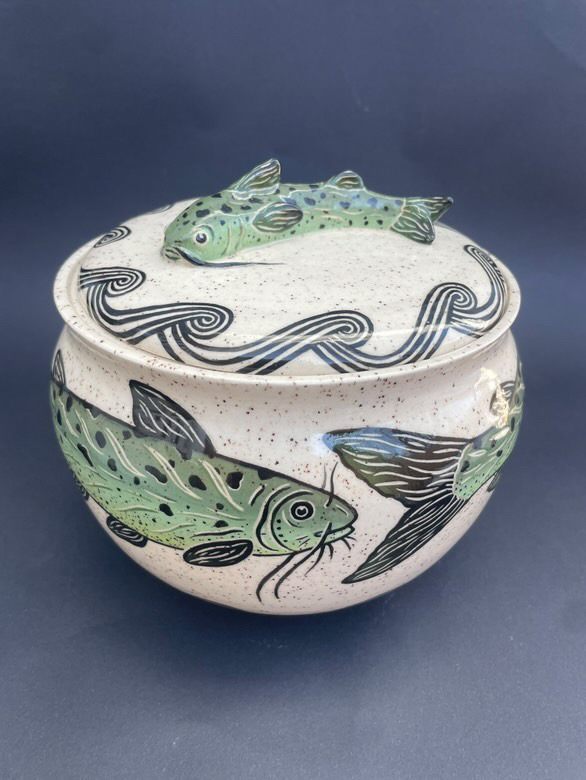
By Emma Saville
Maeve Hilgers is a functional ceramics artist and arts teacher in Lawrence, Kansas. She is a citizen of Cherokee Nation. Hilgers teaches at the Lawrence Arts Center and at Van Go. Fry Bread caught up with her to learn more about her work and what influences her designs.
Fry Bead: Can you tell us how you got into ceramics?
Hilgers: I was always into doing art when I was young. My dad was a high school art teacher, his dad was an art teacher. My other grandpa was an artist. But I didn’t really start doing ceramics until probably high school, except for little projects here and there. If you’re from a small town, it was probably the same, we didn’t have a big art program or anything. I took some rec center classes in high school for throwing [clay] that were helpful. But until I went to college, I was mostly into painting. I went into college being like, “I’m a painter,” and then I took a painting class, and was humbled very quickly by how good the other painters were. At the same time, I got really into ceramics. I went to Johnson County Community College and Haskell for my first two years. I had a really awesome ceramics teacher at Johnson County, and that’s definitely where I developed most of my skills for throwing … I went to KU for art education, so I had some ceramics classes there. I also got into doing underglaze work, which is what I do now, and illustrating on clay at KU, and once I started doing that, I was stuck on it.
Fry Bead: Can you explain to us what underglazing is?
Hilgers: There are different types of glaze in ceramics, and they get fired to different degrees. A lot of pottery that you see has one color on it, so it’ll be green, or marbly or speckly all around, and that’s kind of more of a high-fire glaze that you would put on the entire thing. There are clear glazes, which is what I put on at the end of my process. There are also underglazes, which go under the clear glaze or on their own. You can paint those on with a brush, either when the clay is still wet or leather hard [texture]. You can also do it after it’s been fired once, then, if you do it like me, when the clay is still kind of wet, you can carve through it to reveal the clay underneath. It pretty much comes out the exact color that you think it will, which is nice. It’s like paint, but harder to blend. I would say it’s water-based, so if it dries out, you can re-wet it. And they’re pretty expensive, but very fun to use, and I’m hooked on them now, so spend wisely.
Fry Bead: What kinds of ceramics do you make?
Hilgers: I’ve mostly been doing functional work for the past five years. So, mugs mostly, I feel like people always want mugs the most at markets. The same with cups, bowls, plates and little dishes. I do quite a few hanging planters. I do a coffee pour-over sometimes … I don’t know what drew me to functional work, other than it’s just fun that you get to use it. Once I started selling functional work, it was so cool to hear people say that my art gets to be part of their daily rituals, especially with coffee cups and pour-overs. It’s just nice to know that they get to use it every day, they look at it and it brings them joy. I’ve kind of, as an artist in general, feel like I’ve always been more into functional art, or art that’s a little more attainable for people to both buy and also relate to. I like mugs, and I think that they can be as high up in the art world as a giant painting. So I’m a mug advocate. I have started making more hand-built items. I started making altars recently that you could hang on the wall. They’re still functional because you could put a candle on them.
Fry Bead: You tend to paint nature and animals. Can you kind of tell us how you chose to focus your work on those subjects?
Hilgers: I don’t think I ever decided to do that, it was the style I started making when I was making art before with painting and printmaking. I was into animals and plants, which is my favorite thing in life. I love a critter for sure, especially wild animals, like ones that we have around here [Kansas], like coyotes, snakes, and vultures. My mom was a science teacher when I was younger; her dad was a Cherokee artist and a science teacher too, and he always had snakes and lizards. He had giant tubs in his backyard with turtles and other animals in them. So I think that definitely inspired me, and I just kind of put the two sides of art and science together.

Fry Bead: Is there a project or a piece that stands out to you the most?
Hilgers: I would say when I’ve been able to combine my love and my passion for nature. Specifically, the Kansas prairie, with my art, like the farm that I work on, I’ve made seed jars for them. The seed jars, they’re inspired by the plants and the pollinators and then we get to harvest the seeds and put them inside and sell them, so that those types of projects have been the ones that feel the most successful to me and for who I am as an artist, and bringing those two together. Recently, I made some bigger work for the Trail of Tears art show. That was my second year at the show. I definitely pushed myself to make some bigger work and more well thought through pieces. It’s a different type of work for me.
Fry Bead: Thank you for talking with us and sharing your work! Do you have anything you would like to add?
Hilgers: If anyone reading this is an artist, or is wanting to be an artist, and is going through some sort of art block, I would say that I am right now too. I think after that show [Trail of Tears art show], it’s not necessarily an art block, but I’m kind of paralyzed by the fear that I will have no more ideas. If anyone’s going through that, it comes and goes and you just kind of have to write it out. I’ve been trying to get myself to sketch more. Go back to that, those 2D skills, and switch it up a little, and trust that the ideas will come to me when they’re ready.


